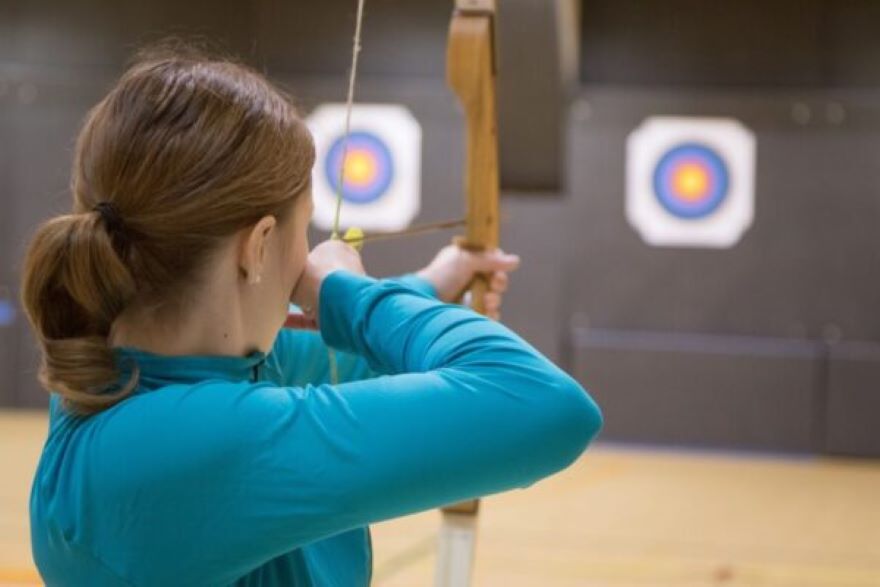Hey there! So, have you ever wondered what makes some bows in archery easier to use than others? It all comes down to a concept called “archery forgiveness.” Don’t worry if this is new to you – I’m here to break it down!
What Is Archery Forgiveness?
Bow forgiveness refers to the bow’s capacity to minimize the impact of minor shooting imperfections, enhancing accuracy and consistency in arrow flight.
Imagine you’re shooting arrows with a bow. Now, some bows are designed in a way that ignores the little mistakes you make in your form such as your anchor or grip. In other words, even if your technique isn’t perfect, these bows will still perform well and help you hit your target.
Now, this doesn’t mean these bows magically fix all your mistakes, but they do make it easier for beginners to have more consistent and accurate shots. It’s like having a little cushion for your technique.
I hope that clears things up a bit! If you’re curious about the specifics of what makes a bow forgiving, we will be covering them in detail as well.
Is ‘Forgivingness’ A Myth? Debunking Misconceptions
Some people might think that forgiving bows are like magical tools that fix all your mistakes. But that’s not exactly true. Forgiving bows help, for sure, but they won’t make you a perfect archer overnight. They’re like training wheels that make things easier, not a complete solution.
What Factor Makes A Bow Forgiving?
A bow’s forgiveness depends on things like how far the string is from the bow (called the brace height), the length of the bow itself, and even how fast the arrows fly. These things work together to make a bow more forgiving, giving you a bit of leeway in your technique.
Lets look at some factors that influence the bow’s forgiveness.
1. Brace Height
Brace height refers to the distance between the bowstring and the grip of the bow. A longer brace height means more forgiveness. Imagine it like having a larger margin for error. If your release isn’t spot on, a longer brace height gives the arrow a bit more time to correct itself in flight. This can be particularly beneficial for beginners who might not have perfected their shooting technique yet.
How does Brace Height affect forgiveness?
A longer brace height gives the arrow a little more time to straighten out before it leaves the bow. This can help smooth out small mistakes in your shooting form, making your shots more consistent. Even if your grip or anchor point isn’t perfect, a forgiving brace height can help keep your shots on target.
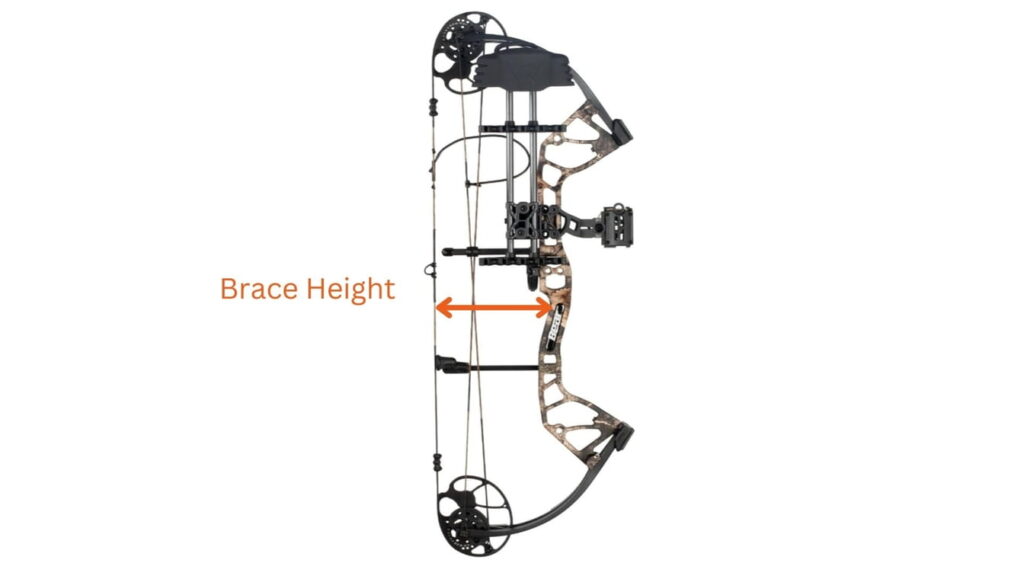
Ideal Brace Height Recommendations
While the recommended brace height varies depending on the bow’s design, many archers find that a brace height of around 7 to 8 inches strikes a good balance between forgiveness and arrow speed.
2. Bow Length
Bow length plays a crucial role in determining a bow’s forgiveness, and it’s all about stability and consistency in your shots. Think of the bow as an extension of your arm – a longer bow offers more room for error correction, making it more forgiving.
Stability through Length
Longer bows provide enhanced stability due to their increased physical presence. When you draw the string back, the longer riser (the central part of the bow) helps distribute the forces more evenly, minimizing any unintended movements caused by minor imperfections in your shooting form.
Longer bows are however harder to manage. Bow hunters may prefer shorter bows due to their ease of use in different scenarios like shooting from a tree.
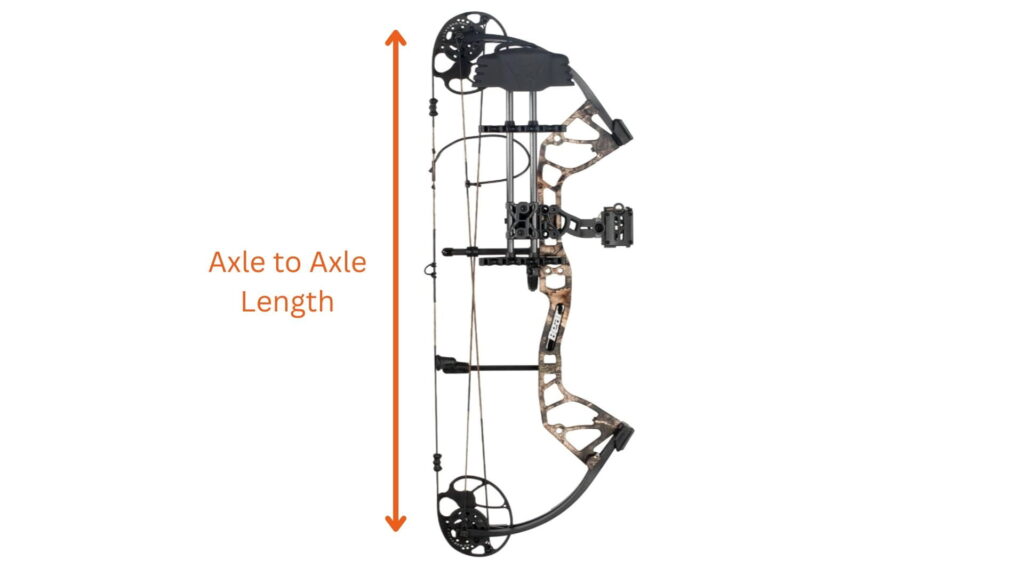
Consistency in Aim and Release
Imagine trying to balance a long stick on your finger versus a short stick. The longer stick is easier to balance because it reacts more gradually to small shifts. Similarly, a longer bow’s increased mass and length create a smoother and more controlled release, minimizing the impact of slight inconsistencies in your draw and release technique.
3. Arrow Characteristics
When it comes to archery, the arrow you choose isn’t just a pointy projectile – it’s a critical component that can significantly impact how forgiving your shots are.
Weight Matters
One of the key aspects of arrow forgiveness is its weight. Heavier arrows tend to be more forgiving than lighter ones. This might seem counterintuitive at first glance, but it’s all about physics. Heavier arrows have more momentum, which means they’re less likely to be swayed off course by minor deviations in your shooting form.
A heavier arrow maintains its trajectory better through small inconsistencies in your technique, resulting in more consistent shots.
Consistency in Flight
Heavier arrows also provide a steadier flight path. They react more gradually to disturbances in the air, such as wind, which helps maintain accuracy. Think of it as sailing a larger, more stable boat on choppy waters versus a smaller, more nimble vessel.
4. arrow Speed
While heavier arrows offer forgiveness, it’s important to strike a balance between arrow weight and speed. Arrows that are too heavy might sacrifice speed and flatter trajectory, affecting your ability to aim accurately over longer distances. Conversely, arrows that are too light might sacrifice forgiveness for greater speed, leading to less consistent shots.
5. Cam System Types
Bows have cam systems that control how the bowstring is released. Single cam bows are often smoother in operation, which can lead to more consistent shots. Dual cam bows offer more speed but might require more careful tuning.
Single Vs Dual Cam: Forgiveness Comparison
Single cam bows are generally considered more forgiving because their design reduces synchronization issues. Dual cam bows, while potentially faster, might require more precise setup to maintain forgiveness.
Why Single Cam Bows Are Forgiving?
Single cam bows tend to be more forgiving due to their consistent and smoother draw cycle. Their reduced complexity means fewer variables that could impact your shot. Additionally, they often have fewer moving parts, reducing the chances of components going out of alignment.
6. Bow Weight
The weight of your bow impacts its forgiveness. Heavier bows tend to be more forgiving. It’s like having a steadier foundation – they’re less affected by slight movements, making your shots more consistent.
7. Stabilizers and Counter-balancers
Stabilizers are like your bow’s helpers. They’re extra weight attachments that enhance forgiveness by reducing vibrations and wobbles when you shoot. Counter-balancers balance the bow’s weight, making it more comfortable to hold and improving your aim.
Stabilizers and counter-balancers make your bow more stable during and after the shot. They absorb excess energy and prevent vibrations that can throw off your aim. Think of them as the shock absorbers of your bow – they make sure everything stays on track.
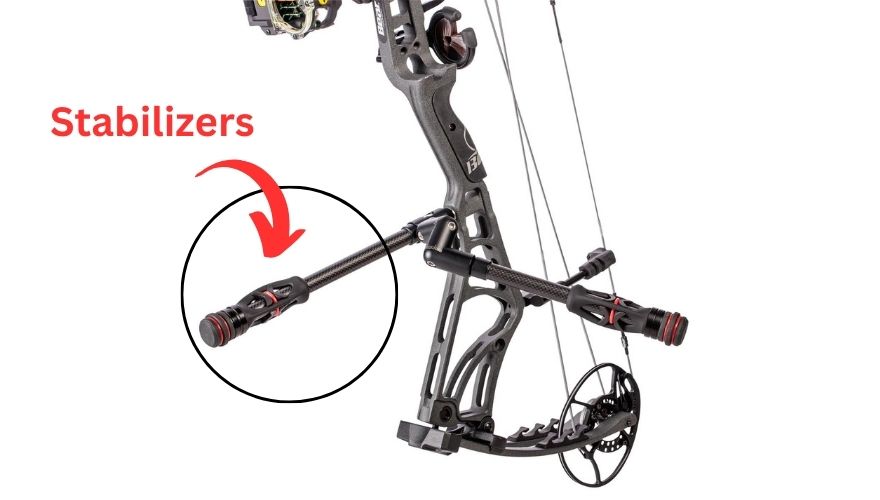
Why You Need a Forgiving Bow?
Choosing a forgiving bow means your shots are more likely to hit the target even if your technique isn’t perfect. It’s like having a safety net that boosts your confidence and helps you improve faster. Forgiving bows make learning and enjoying archery much smoother. Below are some benefits of a forgiving bow
Reduced Sensitivity to Imperfections: Forgiving bows are less sensitive to small errors in shooting form or release technique. This means that minor mistakes by the archer are less likely to result in significant accuracy deviations.
Wider Tolerance for Arrow Spine: Forgiving bows can accommodate a wider range of arrow spine (stiffness) without negatively affecting accuracy. This flexibility allows archers to experiment with different arrow types and weights.
Increased Stability: These bows often have longer axle-to-axle lengths and greater mass, which enhances stability during the aiming and shooting process. This stability can help archers maintain a more consistent shot.
Improved Consistency: Forgiving bows are designed to mitigate the effects of torque or twisting during the shot cycle, leading to more consistent arrow flight and groupings.
Enhanced Forgiveness for New Shooters: Novice archers benefit from forgiving bows as they provide a gentler learning curve, allowing beginners to enjoy the sport while they develop proper shooting technique.
What’s Right For You? Forgiveness or No Forgiveness
When choosing a bow, your comfort matters. If you’re new to archery, a forgiving bow can be a game-changer. Its forgiveness compensates for any technique gaps as you learn. For experienced archers, think about your shooting style and preferences. Do you like the challenge of a less forgiving bow, or do you prefer the consistency of a forgiving one?
Matching Bows to Archery Type
Different archery types benefit from different forgiveness levels. If you’re into target shooting where precision is key, a forgiving bow could lead to better scores. On the other hand, if you’re into hunting, maneuverability might be more important than extreme forgiveness. Think about your archery goals and choose accordingly.
Comparing Forgiving Bows
| Factors to Compare | Bow A | Bow B | Bow C |
|---|---|---|---|
| Brace Height | 7″ | 8″ | 7.5″ |
| Bow Length | 32″ | 34″ | 31″ |
| Cam System | Single | Dual | Single |
Bow A
- Low brace height for potential accuracy.
- Shorter length for maneuverability.
- Single cam for smoother draw.
Bow B
- Higher brace height for more forgiveness.
- Longer length for stability.
- Dual cam for speed.
Bow C
- Moderate brace height for balanced forgiveness.
- Compact length for tight spaces.
- Single cam for consistency.
Testing Forgiving Bows
Comparing forgiving bows is like trying on shoes – you want the one that fits just right. Try shooting a few bows, paying attention to how they feel when you draw and release. Look for the bow that gives you the best combination of comfort and forgiveness. It’s like finding a trusty companion for your archery journey.
Longbow vs. Recurve vs. Compound Forgiveness: Comparing Bow Types
When it comes to forgiveness in archery, different bow types offer unique characteristics. Let’s explore how longbows, recurve bows, and compound bows differ in terms of forgiveness.
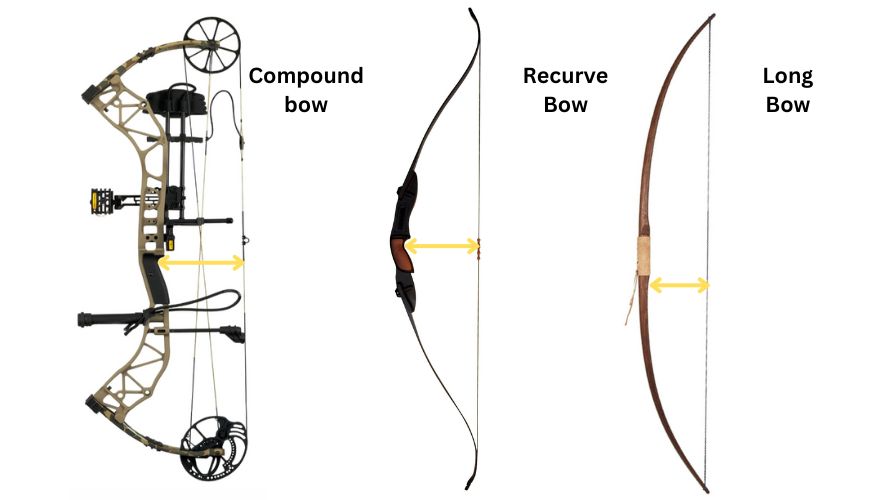
Longbows
- Forgiveness: Moderate
- Stability: High
- Learning Curve: Moderate
- Versatility: Low
- Shooting Style Variety: Limited
Longbows are steeped in tradition and offer a smooth shooting experience. Their forgiveness is moderate, requiring consistent technique for accurate shots. The longbow’s length and simple design contribute to its high stability. While they may have a moderate learning curve, they provide a rewarding experience for those seeking traditional archery challenges.
Recurve Bows
- Forgiveness: Moderate
- Stability: Moderate
- Learning Curve: Moderate
- Versatility: High
- Shooting Style Variety: Extensive
Recurve bows offer versatility with removable limbs and a design that promotes accuracy. Their forgiveness is similar to longbows, encouraging proper form for consistent performance. Recurves have a moderate stability level due to their shorter length and recurve design. They suit archers looking for an adaptable option and provide choices for different shooting styles.
Compound Bows
- Forgiveness: High
- Stability: High
- Learning Curve: Low to Moderate
- Versatility: Moderate
- Shooting Style Variety: Wide Range
Compound bows stand out in forgiveness due to their advanced technology. They offer a high level of stability, making them forgiving even for less experienced archers. The cam system’s design contributes to their consistent performance. With a relatively low to moderate learning curve, compound bows are user-friendly. Their moderate versatility allows customization for various shooting styles.
Choosing the Right Bow
Selecting between longbows, recurve bows, and compound bows depends on your preferences, skill level, and archery goals. If you prioritize forgiveness and stability, compound bows are a strong contender. Longbows and recurves offer unique challenges and rewards, appealing to those who appreciate tradition or versatility. It’s about finding the bow that aligns with your archery journey and preferences.
FAQs
Q1: What does it mean when a bow is forgiving?
A forgiving bow is designed to minimize the impact of minor errors in your shooting technique. It offers a cushioning effect, allowing your shots to remain accurate even if your form isn’t perfect. Forgiving bows are particularly beneficial for beginners and archers seeking consistent performance.
Q2: What is the most forgiving hunting bow?
The Black Mamba 31 bow by APA Archery stands out as the most forgiving hunting bow, coupling forgiveness with remarkable performance. This compound bow blends forgiving characteristics with high specifications, including an IBO speed of up to 350 FPS, a 31 1/4-inch axle-to-axle length, a 6 3/4-inch brace height, and a lightweight physical weight of 3.8 lbs. Its forgiving nature, combined with a comfortable draw, balanced design, and 80% let-off, positions it as an ideal choice for accuracy-focused archers.
Q3: What is the most forgiving brace height?
Brace height around 7 to 8 inches is often considered a good balance between forgiveness and speed. This range allows the arrow to clear the bow smoothly after release, reducing the impact of small errors in your shooting form.
Q4: Why is a longer brace height more forgiving?
A longer brace height gives the arrow more time to clear the bow before it starts its flight. This gradual clearance reduces the effect of minor inconsistencies in your draw and release technique, resulting in more accurate and forgiving shots. The extra leeway provided by a longer brace height enhances your overall shooting experience.
Conclusion
In the world of archery, forgiveness emerges as a guiding principle that bridges the gap between skill levels and techniques. Through our exploration, we’ve uncovered the nuances of forgiveness, understanding how elements like brace height, arrow characteristics, and cam systems influence our shots. By opting for forgiving bows, be it the elegance of a longbow, the versatility of a recurve, or the precision of a compound bow, we open doors to enhanced accuracy and enjoyment.
As you step onto the archery range, remember that forgiveness is more than a technical aspect – it’s a mindset. It’s the understanding that even the most experienced archers benefit from forgiving bows, and that each shot is a step towards growth. So, whether you’re hitting bullseyes consistently or just starting your journey, embracing forgiveness in archery promises a rewarding and fulfilling experience.
